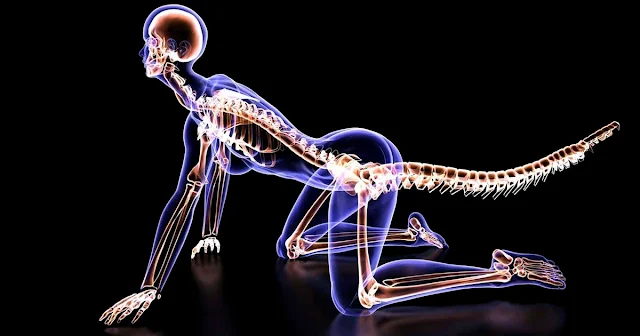One of the most remarkable changes in human evolution is the loss of our tails, a transformation that occurred around 25 million years ago. This pivotal shift not only altered the trajectory of our species but also marked a significant moment in the evolutionary history of primates. While scientists have long speculated on why humans lost their tails, the genetic cause has remained elusive—until now. A recent study published in Nature has finally uncovered the genetic factors responsible for this evolutionary change.

The Quest to Understand Tail Loss
The journey to unravel the mystery of human tail loss began in an unexpected way. Bo Xia, a graduate student at New York University, was inspired to investigate the origins of the human tailbone after injuring his own coccyx. This personal curiosity led Xia and his team to embark on a groundbreaking scientific investigation.
Through careful research, the team focused on the TBXT gene, which plays a crucial role in regulating tail length in various species. Their research revealed a unique genetic mutation within this gene, providing a major breakthrough in understanding human evolution.
The Role of Jumping Genes
A key aspect of this discovery lies in the role of Alu elements, often called “jumping genes.” These genetic elements, specific to primates, can move within the genome and cause significant changes. The researchers found that Alu elements inserted themselves into the TBXT gene, triggering a chain reaction that led to the loss of our tails.
This insertion activated a process known as alternative splicing, where RNA molecules are cut and restructured, which ultimately led to the deletion of a crucial exon. This change altered the structure and function of the resulting protein, leading to the tail loss seen in humans.
Validation Through Mice Studies
To confirm their findings, the researchers engineered laboratory mice with the same genetic mutations found in humans and apes. These genetically altered mice lost their tails, providing compelling evidence that the identified mutation plays a crucial role in the absence of tails in humans and other primates.
However, the study also uncovered a downside to tail loss: an increased risk of neural tube defects, such as spina bifida. This finding highlights the complex balance between evolutionary benefits and potential genetic trade-offs.
The Broader Implications
This discovery has profound implications not just for understanding human evolution, but also for human anatomy and health. The loss of our tails was not a random event but a genetic adaptation with lasting consequences. It illustrates the complex relationship between genetic changes and the way they shape our physiology over time.
As we continue to study our evolutionary past, these findings remind us of the intricate process of natural selection and genetic innovation that has shaped humanity. This breakthrough also underscores the power of scientific inquiry in uncovering the mysteries of our origins, offering insight into the past that can help us understand our future.
The identification of the genetic reasons behind tail loss is a testament to the persistence of scientific exploration and the ongoing quest for knowledge about our evolutionary journey.
Young Pianist Stuns Crowd with Beautiful Rendition of Queen’s “Bohemian Rhapsody”

Expectations are high for the famous song “Bohemian Rhapsody.” Many people think that performing this anthem is difficult. However, Cole Lam, a young pianist, demonstrated that skill has no age restrictions.
The 12-year-old prodigy Cole was about to take the world by surprise with a musical voyage that would begin at London’s busy St. Pancras International Station. Two adults approached him as he was getting ready to play the piano; they had no idea how incredible the skill they were about to witness would be.
Cole played the first few notes of “Bohemian Rhapsody” with a bashful smile. It seemed as though everything around him vanished and time stopped still. His fingers moved fluidly over the keys, striking each note with feeling and accuracy.
It was clear from watching Cole perform that he had a strong emotional connection to the song. Everyone who had the honor of witnessing him perform was enthralled by his obvious passion and commitment.
Cole can play more than just the piano, though. In addition, he plays the clarinet and guitar with excellence, demonstrating his versatility and passion for music. His impressive portfolio, which demonstrates his aptitude and perseverance, is impressive even at the age of twelve.

He charmed the audience with his performance. Cole’s performance served as a reminder of the influence that music has on our lives. He is an inspiration to his classmates and aspiring musicians alike because, despite his youth, he has already attained remarkable success.
Cole’s performance is incredibly captivating to see. His ability is unbounded, and as long as he continues to develop it, we can only speculate about the amazing heights he may achieve.
So take a seat, unwind, and get ready to be astounded by Cole’s magnificent performance of “Bohemian Rhapsody” at the London station. Tell your friends and family about this amazing performance on Facebook so they may experience the magic for themselves.



Leave a Reply